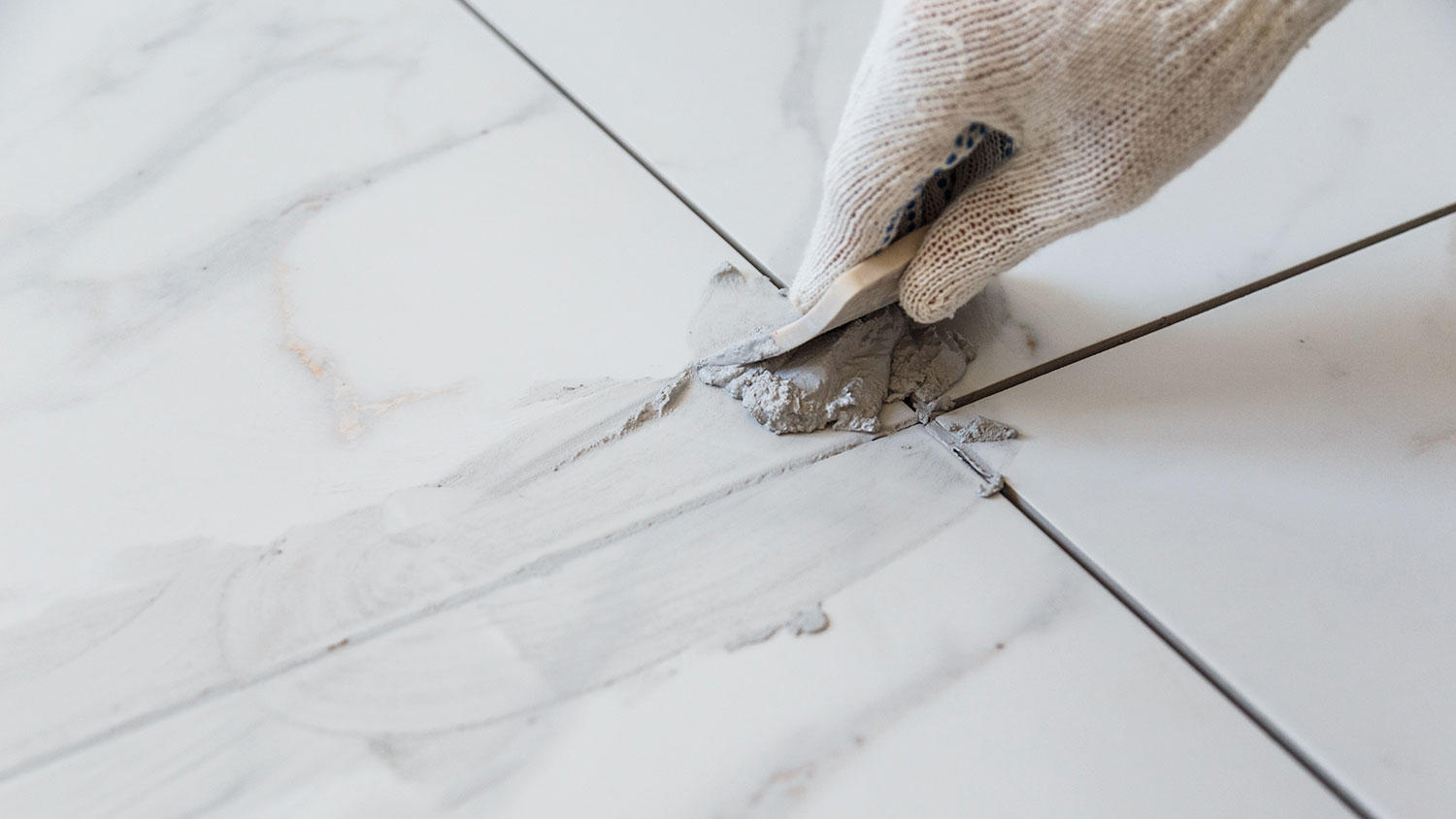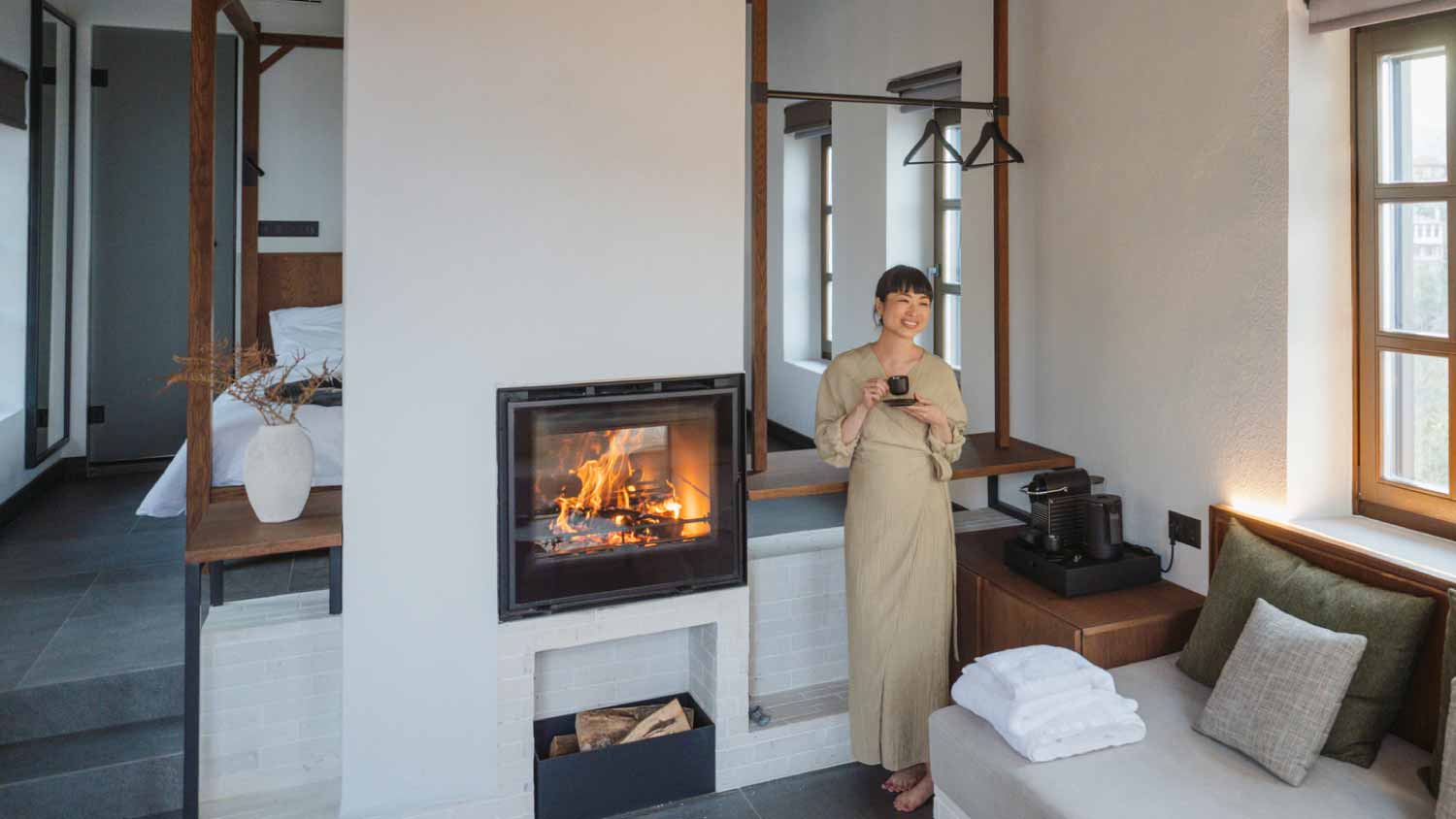
Before installing a gas fireplace insert, it’s important to understand the various cost factors. Here’s how much an average gas fireplace insert costs.
Lay on the charm with this DIY project


While tiling a fireplace hearth can be an exciting DIY adventure, you’ll want to make sure you’re doing so safely. Choosing the wrong materials, failing to prepare the surface, and not extending the hearth the correct amount could not only be damaging to your home, but it could also cause a house fire or burns.
Once you’ve made sure your plan is a safe one, you can start removing existing tiles and choosing materials. When you remove existing tiles, scrape off any previous grout or adherents. If you need to, sand the surface down until it’s uniform, taking care not to remove any of the underlying base.
General guidelines to follow are to use materials that are heat-resistant. This includes the grout and adhesive you use to adhere the tiles to the underlying surface as well as the tiles themselves. Once you have your materials ready and the surface is prepped, you can begin laying your new hearth by following the steps below.
Because this area in front of your firebox protects the floor from ash and embers, you’ll want to make sure you comply with local building codes. The codes might require the hearth material to be a specific thickness, such as 1/2-inch. They may also dictate the hearth dimensions, such as 16 inches deep and eight inches from both sides of your firebox.
Place plastic sheeting and painter’s tape around the hearth’s perimeter to protect your floor. Then make sure your hearth has an even and level non-combustible substrate.
If your home has a concrete slab, you might need to level it out. With the unnotched edge of a trowel, apply a thin coat of thin-set mortar with latex additive to smooth the surface. Let it dry before moving on.
If you have a plywood subfloor, use a utility knife to cut two pieces of cement backer board to fit your hearth dimensions. Apply mortar to the subfloor, then embed one of the boards in it. Apply mortar and place metal lath on top of the embedded board. Apply mortar to one side of the other board. Lay the other board on the embedded board mortar side-down. Make sure the boards line up and let it set for 48 hours.
Decide on a pattern for your tile, such as grid or herringbone. Divide the hearth into quadrants. Beginning at the front of one, set down a line of tiles, working from the center to the edge. Leave room between tiles for grout and mark any edge tiles that you’ll need to cut. Fill in that quadrant.
Repeat with the remaining quadrants until you fill in the entire hearth. Carefully move all the tiles in the correct order to a board.
When you actually get to cutting the tiles, you’ll want to use a tool called—appropriately—a tile cutter. You can buy these tools or rent them from some home improvement stores. Remember the old adage before you begin: Measure twice, cut once.
The general procedure to cut your tiles is:
Measure and mark the tiles where you want them cut.
Place the tile on the cutter, aligning the mark with the wheel.
Run the wheel across the tile to score it. You don’t want to cut all the way through as snapping the tiles will lead to a cleaner line. Cutting can sometimes result in a cracked tile or chipped, uneven edges.
Use the lever to snap the tile along the line.
Sand the edges when finished.
Before you even place a tile on the cutter, make sure you’re wearing safety goggles. Even the best cutters in the world need to take precautions in case a tile snaps or a piece of the cutter breaks off.
Thinset is the mortar that you use to glue tiles. If you’ve ever seen someone making pleasing lines in a gray spackling with a flat tool, almost like a zen garden, that’s thinset. It used to be made of cement, sand, and water, and is called thinset because it’s thinner than normal mortar. Because this is for a hearth, you will need heat-resistant thinset.
The steps to mixing and spreading thinset are:
Prepare the surface by thoroughly cleaning it.
Mix the thinset per instructions, ensuring there are no lumps.
Spread the thinset on the prepped surface using a notched trowel.
This is not a terribly complicated step but make sure you do not apply the thinset too thick or thin. It should be a uniform layer just under 1/8th of an inch thick.
Now that your surface is prepped and ready, you can get to the fun part. Setting the tiles is the most crucial step because once they’re set, you won’t want to deal with the hassle of removing and placing them a second time. Make sure you have them all aligned correctly and ready to place before you begin.
You should have a troweled surface of thinset that appears ridged. This is where you will place your tiles. Many people use tile spacers when they place their tiles. These spacers are placed between the tiles and result in a clean, even look. Some types of spacers are:
X-shaped spacers
TAVY spacers
T-shaped spacers
U-shaped spacers
Wedge spacers
Using spacers has many advantages. Firstly, you will be able to plan your entire design without adhering to anything. Another benefit is they eliminate any errors you may make with spacing as they are all the same. Start from a straight edge—usually a wall—and work your way outwards when using tile spacers.
Ideally, you will have used the spacers when you laid out your tiles and before you started prepping the surface. However, if you still have the tile cutter, you can make last-minute adjustments to tiles if needed.
Once you are sure your design is laid out correctly, you can start pressing your tiles into your thinset. You don’t need much pressure when pressing the tile down. Doing so is actually a mistake, as it can spread the thinset which results in an uneven surface.
However, you don’t want to press too lightly either. If you want a general guide, think of squeezing the brake on a bicycle. This is about the same amount of pressure you’ll apply to each tile as you set them.
Once you press a tile into the mortar, you’ll look for a few things. Make sure the tile is aligned, remove any excess thinset that is squeezed out from the sides of the tile, and generally keep the space clean. You don’t need to work super fast, but moving too slowly can result in the mortar drying out.

Using unsanded grout and a grout float and sponge, grout the joints, removing excess grout and haze. Let it dry for 24 hours. Caulk the joints and let everything set for two or three days. Then, if necessary, seal the tiles.
Once everything has set, it’s a good idea to seal the tiles. This extra step may seem unnecessary, but it protects the tiles against stains, cracks, and moisture damage. Hearths tend to see lots of action and unsealed hearths will look weathered much sooner than sealed ones.
Seal your hearth with a clear sealant. Make sure to check the glossiness as some sealants can make the stones look “wet,” which you may or may not want, depending on the look you’re going for. If you find the tile you purchased looks a little bland, there are stone sealants that can enhance the look of your tile. No matter the reason, sealing your hearth protects both the tile and your investment.
Because the fireplace is usually the focal point of a room, the hearth is a very visible spot. For this reason, you might want to only take on this project if you have tiling experience and feel confident that you can lay tiles symmetrically. A local professional tile installer might be able to tackle this project in a day or two, but it could take novices closer to three days.
Hiring a pro will cost between $13.50 and $83 per square foot. If you choose to DIY this project, you’ll only pay between $9.50 and $51 per square foot.
Dina Cheney contributed to this piece.
From average costs to expert advice, get all the answers you need to get your job done.

Before installing a gas fireplace insert, it’s important to understand the various cost factors. Here’s how much an average gas fireplace insert costs.

This guide shares information about the cost to remove a gas fireplace, including the average price to additionally remove the breast, stack, and chimney flue as well as which experts will be needed to complete the project.

If you’re thinking about installing a new fireplace, you might wonder: How much does it cost to run a gas fireplace? Let’s review the numbers.

From crackling wood-burning to electric, homeowners have several types of fireplace inserts to choose from. But how do you decide which is right for you?

What is a fireplace insert? It’s like a traditional fire in a box—which helps keep the heat it generates in your house, rather than draining out the chimney.

The right wood-burning stove can efficiently warm your space and make it cozy and inviting. Weigh the pros and cons of seven types of wood-burning fireplaces.